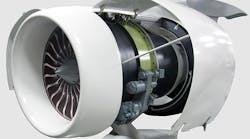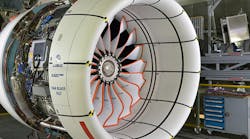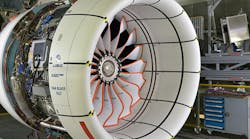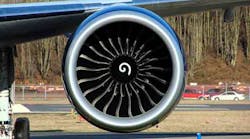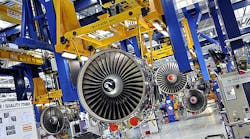Jet-engine developer CFM International reported the integrated propulsion system for its forthcoming LEAP-1C high-bypass turbofan engine has earned type certificates from both the U.S. Federal Aviation Administration (FAA) and the European Aviation Safety Agency (EASA), checking another box on the list of requirements for the engine to begin commercial service.
“It has been an incredible year for the LEAP program, culminating in the certification of the third model in this engine family,” according to Allen Paxson, CFM exec. v.p. “Everyone, from the project and engineering teams to manufacturing and our suppliers, has done an incredible job of keeping this program on schedule and building an engine that is delivering everything that we have promised.”
The LEAP-1C is one of three variants of CFM’s latest series of high-bypass turbofan engine designs. CFM International, is a joint venture of GE Aviation and French jet engine manufacturer Snecma, a Safran subsidiary. Each partner manufactures the LEAP engines in its own operations: GE Aviation assembles the engines at plants in Durham, N.C., and Lafayette, Ind.
The LEAP-1C follows the LEAP-1A, which is the designated power plant for the Airbus A320neo family; and the LEAP-1B, which is targeted for the new Boeing 737 MAX series. The LEAP-1C will be manufactured for the Commercial Aircraft Corp. of China Ltd. (Comac), for its new C919 aircraft. Comac will introduce that twin-engine, narrow-body aircraft by 2018. To date, 573 of C919s have been ordered by Chinese airline and aircraft leasing agencies.
The first LEAP-1C engine completed a successful flight test program on a modified 747 flying testbed GE Aviation’s Victorville, Calif., complex, in late 2014. Comac completed assembly of the first C919 in November 2015, in Shanghai.
The engine is designed with a fully integrated propulsion system (IPS) and a range of other advanced technologies, including 3D-woven carbon-fiber composite fan blades and fan case; a debris rejection system; “fourth-generation, three-dimensional aerodynamic designs; the Twin-Annular, Pre-Swirl (TAPS) combustor, with additive-manufactured fuel nozzles; ceramics-matrix composite shrouds in the high-pressure turbine; and titanium aluminide (Ti-Al) blades in the low-pressure turbine.
The LEAP engines’ thrust reverser was developed by Nexcelle, a joint venture of Safran Nacelles and GE Aviation’s Middle River Aircraft Systems (MRAS).
According to another CFM exec. v.p., Francois Bastin: “The LEAP-1C is the only model for which CFM provides a totally integrated propulsion system that includes the engine, nacelle, and thrust reverser. The IPS, along with the pylon developed by COMAC, were all designed in conjunction with each other. As a result, the LEAP-1C features improved aerodynamics, lower weight, and easier maintenance. We think that our customers are going to be pleased with the airplane/engine combination.”
The nature of the CFM’s joint ownership and manufacturing programs causes it to seek al original certification from both agencies, rather than one lead agency issuing a type certification and the second agency validating that FAA and EASA; typically, one agency will grant the certification and the other will validate that certification.
